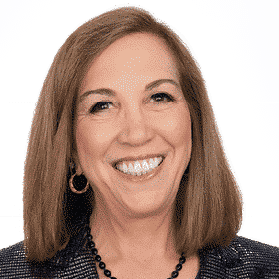The Pitfalls of Perfectionism in Pursuit of Perfection in the Ring – Perfection is often thought of as an end point or a destination. Perfection, I believe, is a process, a culmination of each step, each action, each layer of progress, which when successful, leads to the winner’s circle.
Perfection, by definition, “is the condition, state, or quality of being free or as free as possible from all flaws or defects,” Wikipedia, accessed 2022.
Perfectionism, in psychology, is a broad personality style characterized by a person’s concern with striving for flawlessness and perfection and is accompanied by critical self-evaluations and concerns regarding others’ evaluations… Perfectionism drives people to be concerned with achieving unattainable ideals or unrealistic goals,” Wikipedia, accessed 2022.
Perfectionism, specifically the pitfalls of perfectionism as addressed by Hara Estroff Marano, “may be the ultimate self-defeating behavior. It turns people into slaves of success—but keeps them focused on failure,” Psychology Today, March 1, 2008. Hence, the pursuit of perfectionism is a steady source of negative emotions. What are the top pitfalls of perfectionism in the ring?
The Exhibitor’s Zeal to Make Their Dog Perfect
I heard of an exhibitor who wanted to make sure that her cream Frenchie looked perfectly clean. She doused her dog with purple self-rinse shampoo. Guess what the outcome was in the ring? The judge excused the dog for being “altered by artificial means.” The exhibitor’s zeal to make her dog sparkle resulted in an excusal. In reality, it wasn’t just her zeal for perfection, but that she didn’t know how to properly use the product before she applied it. She was using the wrong product to achieve perfection. Unfortunately, had she done her homework first and learned how to properly prepare the coat, and then applied a product appropriately, if any, the amateur’s pitfall might have turned out to be
professional perfection.
What about the exhibitor with a Black Russian Terrier who wanted the coat fuller with more texture? Another perfection disaster. After applying several different products to the dog’s neck and shoulders, he looked pretty good in the grooming area. The particular pitfall of perfectionism in this case was fussing with it. He kept touching and brushing the coat on the way to the ring, while waiting to go into the ring, and even in the ring. By the time the dog was being judged, the products had the opposite effect on the coat, weighing it down and making the dog look roached, which, even worse, spilled over onto the front movement! Another story of perfection going awry because of mixing products and then overworking them in the coat.
These are two examples of amateurish mistakes made in the zest for perfection; the use of too much, or too little, of the appropriate products with the intent of improving one area of the dog and ending up with the product detracting from another area—with the dog looking like a hot mess!
Both of these outcomes could have been avoided if the exhibitors had consulted their mentors or professionals in the sport, and then practiced at home with trial runs. Top handlers trim their dogs and then move them to make sure that the trim doesn’t negatively detract from the dog, specifically as the dog is in motion. They have a friend or assistant watch them move the dogs and then vice versa—switch places. Nothing is left to chance or to the last minute. Make sure that you know how to achieve a specific, desired outcome. Have each step rehearsed and planned so that you can execute the plan that will culminate in success. In contrast, don’t wait ‘till the show to try something new on your dog! Do not get caught up in the pursuit of being a perfectionist on the day of the show.
The Exhibitor’s Zeal to Look Perfect Themselves
Grooming goofs among the four-legged aren’t the only pitfalls of perfection at dog shows. Watch the rings and you’ll see plenty of missed attempts at excellence among the two-legged. For example, what about that perfect outfit that turns into a nightmare wardrobe malfunction. That stunning silk cravat that will not stay in place. The scarf that you practiced tying just so, yet it comes untied while running around the ring. The skirt that has to be adjusted, because when you bend over, it hitches. Each of these obvious goofs happened because you didn’t test how the outfit moved. You just stood in it! Maybe you did a little bend and side-to-side, but did you squat to the floor and run? It may have looked perfect in the mirror at the store, and even at home, but you forgot to figure out a way to move in it.
Men’s ties are equally at risk of becoming a pitfall of perfectionism. Perhaps you put much thought and time into what you consider the perfect tie. You invested in a gorgeous silk that adds just the right amount of pop to your suit, and a blue that complements your dog’s coat and your eyes. It’s stunning and you feel good putting it on, but the tie is bouncing during the down and back and is then floating in space as you bend to place your dog on the table. You forgot that every tie needs a clasp or tack to keep it from hitting your dog. A tie that is floating in space is a distraction to the judge and maybe even the dog. Again, a pitfall of perfectionism that could have been avoided if the wardrobe was tested prior to ring time.
I’ll always remember Carol Hollands mentoring me as a new judge. She taught me not only to double-check my outfit prior to leaving home, but to give it a test run through all of the movements that I would potentially use that day. A note here that, although this applies to both exhibitors and judges, judges normally have great experience from their longtime exhibiting years and understand this principle well. However, from time to time, we see pitfalls of perfection in a judge’s attire—though it is usually fixed by noon.
Pitfalls in the Ring
Let’s go to the ring now and see what kind of pitfalls lie there. What about the exhibitor who continually resets the dog’s feet right before the judge walks up the line or walks up to examine the dog? This is the perfectionist who sets and resets the leg or foot with minute changes. As a judge, I applaud the exhibitor who makes every attempt to present their charge with perfection; however, when I see the continual setting and resetting, all I can think is, what’s wrong with that “front” or “rear” that it needs all that perfecting? The answer is obvious—the dog has an imperfect body part and, on top of that, is unable to use it correctly. The attempt to present a perfect stack turns into a pitfall for the dog.
Another pitfall of perfectionism is over-trimming. One hair at a time turns into frustration at trying to create the perfect silhouette on your dog. Maybe you’re trying to give the dog the impression of more leg, as in a Golden Retriever. You snip—then snip again—snip, snip, snip, and pretty soon your attempts to perfect your dog’s outline ends up with the dog appearing over-trimmed. The result is that he looks too young to be a special, and even out of proportion for the breed. Had you asked a professional, a specialist in your breed, to assist you and teach you the proper techniques, you might have had a winning outcome and not fallen into one of the many pitfalls.
At this point, we’ve talked about the attempts at perfection that turn into pitfalls, but what else could contribute to efforts that turn sour? What about when you unrealistically consider yourself as a part of the elite? You want to go “mano a mano” or “pro to pro,” except you’re not in that league, you just think you are. So, you go around the ring and you believe you are perfecting your handling skills. You come to a stop with your dog without cueing him. Not only is the dog still moving while you stopped, but he wasn’t even trained to know he should stop. After an awkward
stop, you have to set each leg at least twice to get a decent stack, and when the judge comes up to your dog, you guessed it, the dog is standing out of kilter for its breed. When you take your dog down and back and return to the judge, ready to get your dog’s attention, you bend over, flailing your arm, all the while thinking you’re ready to win the Group at the Garden. You are not. You have fallen into the mistaken mindset that your attempts to be flawless have made you perfect, and that is the pitfall.
You have fallen into the mistaken mindset that your attempts to be flawless have made you perfect, and that is the pitfall.
So, How Can the Negative Feedback Loop Be Broken?
Here is where it is critical to be open to constructive critique, to seek out information from your mentors, and to self-reflect on BOTH your successes and failures. Such is a growth mindset, one that allows for positive growth, improvement, and ultimately, success. In all of these cases, the pitfalls of perfectionism rest on the lack of preparation and a willingness to ask for help from the experts. There is no shame in reaching out to someone who knows more than you do. In fact, I commend those who acknowledge their need for support. Reach out to the breed mentors, the handler mentors, and of course, the coaching mentors who can jettison you from mistaking your attempts at perfection and translate them into authentic perfection. You can’t do it alone! Being open to feedback opens the door to allow for success to unfold, which leads to that star quality that we otherwise fondly refer to as “perfection,” in the winner’s circle.
The Pitfalls of Perfectionism in Pursuit of Perfection in the Ring
By Lee Whittier









